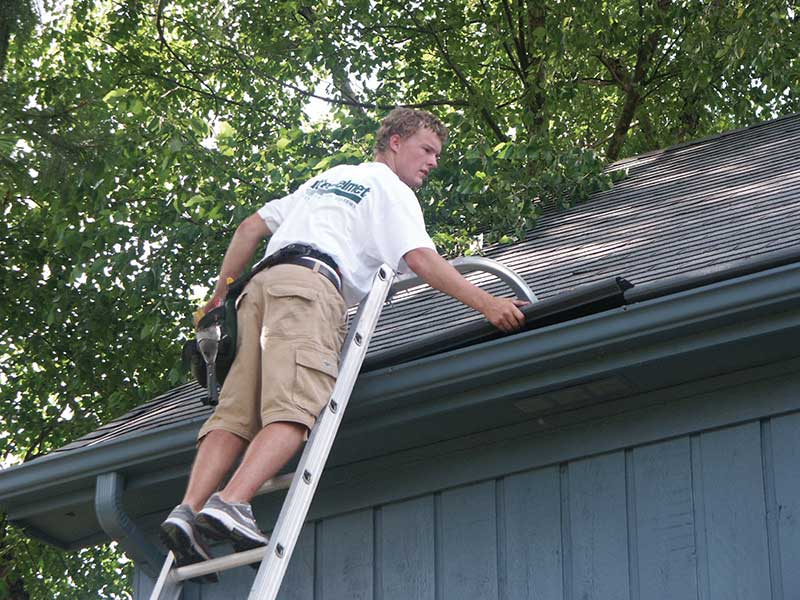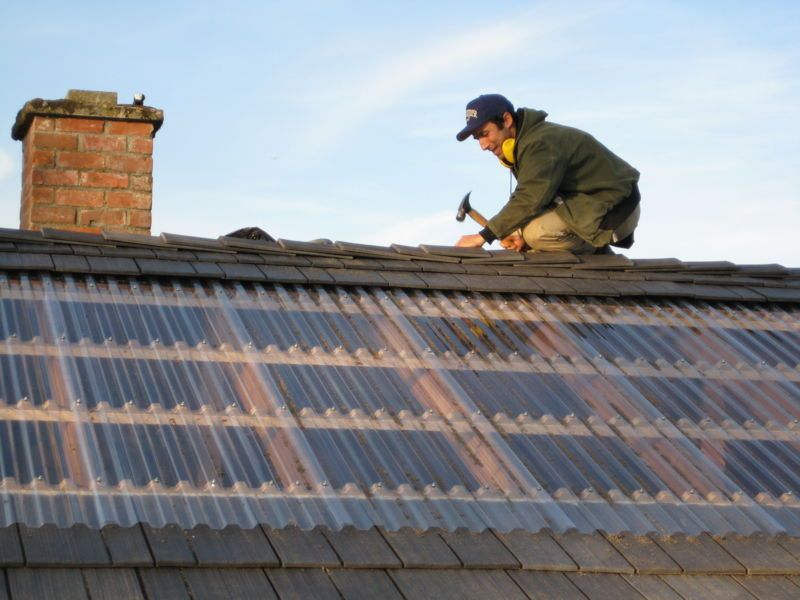
Despite the fact that many organizations and owners of private homes have already successfully used heating systems for roofing, they are still considered an innovation and not everyone understands the feasibility of installing a heating cable, most believe that “warming the street” is not profitable. In fact, heating the roof can save on maintenance and repair of the roof. How does it work and what is roof heating for?
Many people face the consequences of snowfall every day during the winter, which still covers not only the roads, but also the roofs of our homes.
As a result, snow masses are formed on roofs, which later turn into ice, icicles, which are dangerous not only for your family, your animals and your family car, but also, above all, for the roofing material. Management companies continue to drive home service employees with shovels and insurance to the roofs of multi-storey buildings.
The owners of private homes climb the roofs on their own. Both of them risk their health and use tools that spoil the roof. Mechanically, the surface of the roofing material wears out with a shovel. Even timely cleaning of the roof does not improve the situation, because during the work inevitably damaged the outer layer of the roof. In damaged areas, leaks will form over time.
Undoubtedly, the snowfall is amazing, but that doesn’t make it any less dangerous for roofing materials. The crystals of just fallen snow can’t absorb heat the way they used to. Thus, it turns out that freshly fallen snow is less susceptible to melting, but in most cases, it immediately settles dust and dirt, causing particles to absorb light, and snow mass, respectively, to melt.
There are several ways to avoid this unfortunate fate:
- To ensure proper ventilation of the attic. In the case when the roof temperature is not higher than the air temperature, the snow will not melt and therefore will not turn into ice. This method is used only if the floor is well insulated, otherwise heat from the room will be quickly lost through the ceiling. In addition, even properly arranged ventilation often does not bring the expected result.
- Carry out insulation works on the roof. Another way to leave the roof cold is to prevent heated attic air from raising the temperature of the roofing material. To do this, the roof is lined with membranes from the inside, insulating between the membranes.
- Process the roofing material with a chemical agent – an anti-icing emulsion. Such compositions are applied to the surface of aircraft so that no ice accumulates on them at high altitude. It’s effective, but it’s too expensive. Besides, the protective film needs to be renewed several times in winter, and the technological process itself requires the participation of specialists.
- Equipped with an electrical impulse system for anti-icing. It was developed in the sixties for the needs of aviation. The heating unit of the system consists of inductors (electromagnetic coils without a core) fixed under roof overhangs. At the moment when a short impulse is applied to the inductors, they create circular currents, which are as if beating on the roof material.
- Install a heating system for roofs and gutters. Active heating is needed when previous methods cannot produce positive results due to the climate, complex roof structure, exorbitant price or other factors. This is most often the case in regions where the temperature often changes from positive to negative and vice versa.

A good heating system is capable:
- Prevent snow and ice from falling on people, animals and nearby cars.
- Reduce the load on the rafter system and slabs, which usually increase due to ice.
- Extend the service life of the roof by removing mechanical damage from the roofing material.
- Spare the owners of the house from the need for manual trowel cleaning of the roof from snow and ice.
If you are sure that your roof is well insulated and there is proper ventilation, but icicles continue to appear, the only solution is active heating. Of course, it will require a certain amount of electricity, but you will not have to climb up to the roof and clear snow and ice on your own, as well as risk the rapid destruction of the roof and the health of others.
Which cable should I put on the roof heater?
It’s not that simple with the heating cable.
There are varieties, not too different price, but noticeably different in structure and properties, experts allocate:
- Single-core resistive cable. It’s the cheapest variety. These are the kind of conductors you need to bring together in a single point during installation. Term of operation of this cable is short, thus presence of a metal covering under a layer of isolation will provide safety of people even if there will be a breakdown.
- Double-core resistive cable. It has two equal cores or one heating (high resistance) and one supply (low resistance) wire. Since the circuit is closed by an additional wire, the cable end does not need to be led to the beginning of the installation, which makes installation and preliminary calculations much easier. The double-core cable also has reduced electromagnetic radiation, making it more suitable for residential buildings.
- Section or zone cable. The most perfect type of resistive heating elements. It consists of two low resistance parallel conductors (for current transmission only) connected to a high resistance spiral (for heating). It appears that the cable consists of sections connected in parallel, not alternately. In this case, the resistance and degree of heating of each zone is adjusted independently.
- Self-regulating heating cable. The self-regulating heating cable is able to change its output power independently when the ambient temperature changes. Thanks to a specially developed reliable outer and inner protective layer and metal braiding, very high mechanical, chemical and electrical protection is achieved. The middle part of the cable is molded around two parallel conductors.
Do not buy a resistive heating cable for your summer house. It is not able to regulate the heating and will either use electricity for free in all weather or prevent the formation of ice (when off). Resistive cables that are not complemented by weather sensors and controller systems require your regular intervention, so use them only in buildings where you can control their operation.
For complex roofs (some areas have water accumulation, others are difficult to clean from dry leaves or are exposed to sunlight all year round), a self-regulating cable is more appropriate. The system will cost more expensive, but it will last much longer.

